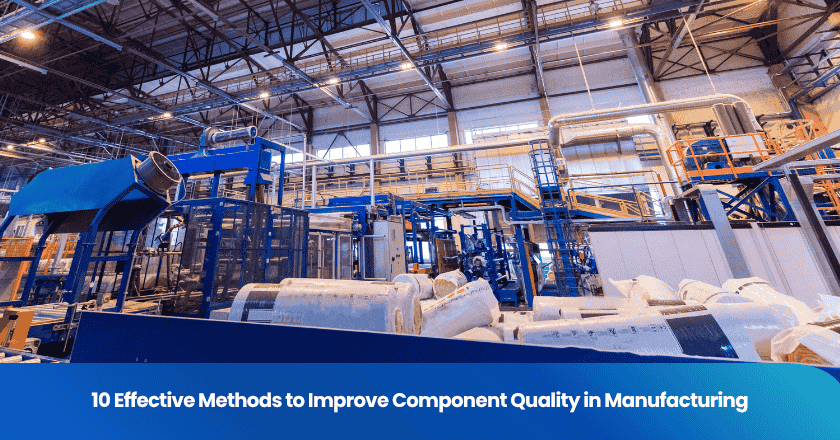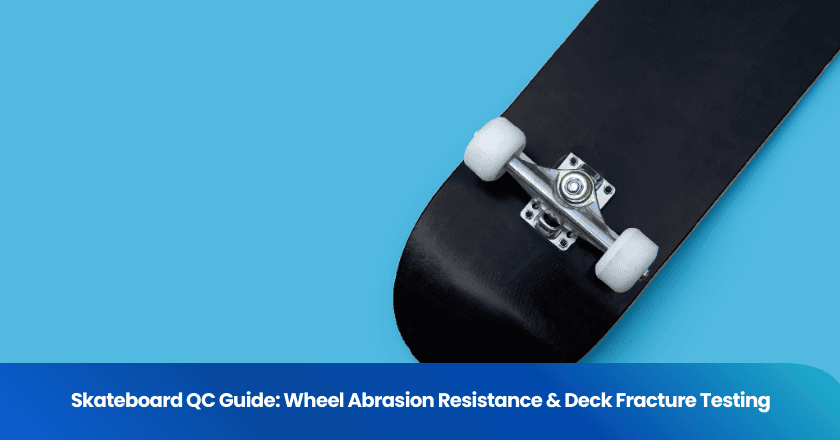
I see the impact of quality every day in manufacturing. High component quality drives operational efficiency and keeps customers satisfied. When I focus on quality, I notice fewer defects, less waste, and stronger customer focus.
Consider these facts:
| Defect Rate | Implications on Customer Satisfaction |
|---|---|
| High | Leads to wasted materials, lost time, increased labor costs, and dissatisfied customers |
| Low | Indicates optimized processes and happy clients |
Recent trends show that AI and automation now support proactive quality management. By prioritizing quality, I help reduce costs and strengthen customer relationships.
Continuous Improvement
Continuous Improvement Mindset
I believe that continuous improvement forms the backbone of manufacturing excellence. When I adopt this mindset, I focus on refining processes and encouraging everyone to seek better ways to work. I see how small changes add up over time, driving higher component quality and operational efficiency. Employees who feel empowered to share ideas and solve problems help create a culture of ownership and accountability. This approach leads to sustained productivity and innovation.
Tip: Encourage open communication and regular feedback sessions to foster a culture of continuous improvement.
Many organizations have proven the long-term benefits of this mindset. For example, Six Sigma uses a structured framework to reduce process variation and defects. Companies that embrace continuous improvement often report higher customer satisfaction and improved operational results. I notice that when teams collaborate and share insights, they consistently deliver better quality components.
Kaizen Practices
Kaizen stands out as a practical method for continuous improvement. I use Kaizen to drive small, incremental changes in daily operations. This practice involves everyone, from operators to managers, in identifying and solving problems. I see how Kaizen helps eliminate waste and improve efficiency, which directly impacts component quality.
Here are some effective continuous improvement methodologies I use to enhance quality:
- Lean Manufacturing: Focuses on eliminating waste and maximizing customer value.
- Six Sigma: Reduces defects and process variation for near-perfect quality.
- DMAIC: Provides a structured approach to problem-solving.
- Kaizen: Promotes ongoing, incremental improvements.
- Total Quality Management: Strives for quality in every activity.
- Kanban: Visualizes workflow to prevent bottlenecks.
Continuous improvement and process optimization work together to refine processes and align them with customer needs. When I combine these approaches, I consistently achieve higher component quality and reliability.
Process Optimization
Minimizing Interruptions
I always look for ways to minimize interruptions in the manufacturing process. Every time production stops, defect rates can rise and quality can suffer. I focus on mistake-proofing, also known as Poka-Yoke, to prevent human errors before they happen. I use the 5S methodology to keep the workplace organized and efficient. This reduces the chance of mistakes and keeps defect rates low. I rely on statistical process control to monitor processes in real time. When I see a problem, I act quickly to keep quality high.
Here are some techniques I use to reduce interruptions and improve quality:
- Poka-Yoke (Mistake-Proofing): Prevents errors before they affect quality.
- 5S Methodology: Keeps the workspace clean and organized, lowering defect rates.
- Statistical Process Control (SPC): Tracks process data to catch issues early.
- Value Stream Mapping (VSM): Helps me see every step and remove waste.
By applying these methods, I notice fewer defects and more consistent quality control. I also see that process standardization and automation help keep defect rates low. When I manage production flow well, I avoid bottlenecks and keep quality at the center of every step.
Streamlining Workflows
I believe that streamlining workflows is key to improving quality and reducing defect rates. I use process standardization to make sure every team member follows the same steps. Automation and system integration help me cut down on manual errors and keep quality control strong. When I manage production flow, I see fewer delays and lower defect rates.
The benefits of streamlining workflows show up in measurable outcomes:
| Outcome | Description |
|---|---|
| Increased Efficiency | Streamlining eliminates bottlenecks and waste, leading to faster production and fulfillment. |
| Reduced Costs | Streamlining processes reduces waste, labor, and errors, positively impacting the bottom line. |
| Improved Quality Control | Enhanced quality-control processes minimize errors and waste, boosting productivity. |
| Heightened Customer Satisfaction | Streamlined operations improve order accuracy, leading to increased customer loyalty and retention. |
| Faster Time to Market | Streamlined processes shorten lead times, allowing quicker response to market changes. |
When I focus on these areas, I see a direct impact on defect rates and overall quality. My team delivers better products, and our customers notice the difference.
Employee Training
Skills Development
I invest in employee training because I see a direct link between skills development and component quality. When I provide targeted training, my team gains the expertise needed to handle complex manufacturing tasks. I notice that well-trained employees make fewer mistakes and maintain higher standards. I encourage ongoing learning through workshops, certifications, and hands-on practice. This approach helps my team stay current with industry advancements and best practices.
Employees who feel confident in their abilities contribute more to quality improvement efforts.
I focus on building a culture where everyone feels responsible for quality. Engaged employees actively identify inefficiencies and suggest improvements. I see how Kaizen practices promote involvement by including team members in decision-making. Open communication makes employees feel valued and connected to their work. When my team participates in continuous improvement, we achieve better business outcomes and foster innovation.
- Employee engagement is essential for sustaining quality initiatives.
- Engaged employees help drive process improvements and accountability.
- Kaizen encourages participation and open dialogue.
Resource Allocation
I allocate resources strategically to maximize the impact of training programs. I analyze skill gaps and direct training where it will improve quality most. For example, I observed an 18% reduction in defect rates after implementing a targeted skills training program in an automotive setting. This result shows how focused resource allocation leads to measurable improvements.
I use the following strategies to ensure effective resource allocation:
- Targeted training programs help me identify and address skill gaps.
- Enhanced training effectiveness leads to improved performance.
- Better-trained employees make fewer errors on the production floor.
I monitor training outcomes and adjust resource allocation as needed. By investing in employee development, I strengthen our commitment to quality and reduce defect rates. My approach ensures that every team member has the tools and knowledge to deliver consistent, high-quality components.
Supplier Quality Management
Supplier Standards
I always start by setting clear standards for my suppliers. These standards help me ensure that every component meets my expectations for quality. I define specific measurements that matter most in my industry. I also check that suppliers hold the right certifications and have a strong compliance record. Here is how I evaluate supplier quality:
1. Define specific quality measurements relevant to my industry.
2. Identify necessary certifications for compliance.
3. Assess the supplier's compliance track record.
I often refer to industry standards to guide my decisions.
The following table shows some of the most common standards I use:
| Standard | Description |
|---|---|
| ISO 9001 | Quality management system standard ensuring consistent quality in products and services. |
| IATF 16949 | Automotive industry standard focusing on quality management in the automotive supply chain. |
| GMP | Good Manufacturing Practices ensuring products are consistently produced and controlled. |
| FDA | Regulations ensuring the safety and efficacy of food and drug products. |
| ISO 14001 | Environmental management standard helping organizations improve their environmental performance. |
I also set expectations for acceptable defect rates, on-time delivery, and compliance benchmarks. These steps help me maintain high quality throughout my supply chain.
Collaboration
I believe that strong collaboration with suppliers leads to better component quality. In my experience, close communication allows me to share my needs and expectations clearly. Suppliers gain a deeper understanding of what I require, so they can tailor their processes to meet my standards.
Tip: Regular meetings and transparent communication build trust and improve quality outcomes.
In industries like medical device manufacturing, every component affects the final product's safety and functionality. I work with suppliers to ensure a transparent and traceable supply chain. This approach reduces disruptions and helps me comply with regulations. When I align my goals with my suppliers, I see improvements in quality and customer trust.
Quality Management Strategies
Setting Quality Metrics
I always start my quality management strategies by defining clear quality metrics. These metrics guide my team and help us measure component quality at every stage. I select metrics that reflect our goals and industry standards. I use a table to track the most important quality metrics for manufacturing:
| Metric | Description |
|---|---|
| Defect Rate | Measures the number of defective parts per million (DPPM) and helps identify failure points in subassemblies. |
| Scrap Rate | Represents the percentage of materials that do not become part of finished products, including various types of scrap. |
| Yield | Assesses process effectiveness, including total yield and first-pass yield (FPY) for quality assurance. |
I review these quality metrics regularly. I set targets for each metric and communicate expectations to my team. I believe that clear quality metrics drive accountability and motivate everyone to improve. I use these strategies to ensure that our quality management system remains effective and relevant.
Tip: I recommend updating quality metrics as processes evolve to maintain alignment with business objectives.
Monitoring KPIs
I rely on key performance indicators (KPIs) to monitor the success of my quality management strategies. I track KPIs to deliver consistent quality to clients and ensure efficient resource utilization. I choose KPIs that align with our strategic goals and clarify expectations across departments. My approach includes the following steps:
- I identify KPIs that support our quality management objectives.
- I monitor KPIs to anticipate risks and guide investments.
- I use KPIs to motivate action and drive operational transformation.
I review KPI data with my team and adjust our strategies as needed. I believe that effective monitoring of KPIs helps me maintain high component quality and supports continuous improvement. I use quality metrics and KPIs together to create a robust quality management system that delivers reliable results.
Leadership Commitment
Leading by Example
I recognize that leadership commitment sets the tone for every improvement effort in manufacturing. When I demonstrate a strong focus on quality, my team follows my lead. I make it a priority to show up on the production floor, engage with employees, and address challenges directly. My actions communicate that quality is not just a goal but a core value. I have seen that when leaders actively participate in improvement activities, employees feel motivated to contribute their best ideas.
- The effectiveness of Total Quality Management depends on leadership commitment and a culture that supports improvement.
- Leadership plays a crucial role in the success of quality improvement initiatives and complex team projects.
I believe that when I model the behaviors I expect, such as attention to detail and a willingness to learn, my team mirrors those actions. This approach builds trust and encourages everyone to take ownership of quality outcomes.
Supporting Quality Initiatives
I support quality initiatives by establishing routines that reinforce improvement. I use digital management tools to track progress and hold teams accountable. These tools help me identify areas for improvement and celebrate successes. I foster a culture where continuous improvement is part of daily work, not just a one-time project.
- I establish routines and management behaviors that promote improvement.
- Digital tools enhance efficiency and accountability in quality operations.
- I encourage a culture of ongoing improvement and employee engagement.
I involve employees in identifying problems and developing solutions. I explain the reasons behind each improvement initiative, connecting changes to customer benefits and long-term sustainability. When resistance to change arises, I address it by involving the team in the process. This approach empowers teams, promotes collaboration, and leads to higher productivity and quality output.
Tip: Involving employees in improvement efforts reduces resistance and builds a sense of ownership.
My commitment to quality improvement ensures that every initiative gains momentum and delivers measurable results.
Evidence-Based Decisions
Root Cause Analysis
I rely on root cause analysis to address recurring quality issues in manufacturing. When I encounter a problem, I use structured methods to dig deeper and find the source. Failure Mode and Effects Analysis (FMEA) helps me identify potential failures before they disrupt production. This proactive approach allows me to prevent issues that could impact component quality. I also use Fault Tree Analysis (FTA), which applies logical thinking to trace faults back to their origins. This method gives me a clear view of how different factors contribute to a problem.
I often turn to visual tools to organize my thoughts. Ishikawa Diagrams, or Fishbone Diagrams, break down complex problems into smaller parts, making it easier to see how each element affects quality. Pareto Charts help me focus on the most significant causes, following the 80/20 rule. By concentrating on the few factors that cause most defects, I can make meaningful improvements. The Five Whys technique pushes me to ask "why" repeatedly, revealing the underlying reasons for quality failures.
- Ishikawa Diagrams
- Pareto Charts
- Five Whys
- FMEA
- FTA
Tip: Combining these methods gives me a comprehensive view of quality challenges and helps me implement lasting solutions.
Data-Driven Actions
I use data-driven decision-making to improve quality at every stage of manufacturing. By monitoring quality metrics in real time, I can spot inefficiencies and make immediate adjustments. Big data transforms my approach from reactive to proactive. When I analyze trends, I catch small errors before they become major defects. This shift leads to consistent quality and fewer surprises on the production floor.
- Data-driven processes help me identify inefficiencies quickly.
- Real-time monitoring allows for fast corrections.
- I have seen defect rates drop by up to 40% after adopting these practices.
- Customers notice the improvement, and satisfaction rises as quality increases.
Note: Data-driven actions not only reduce defects but also speed up my response to quality concerns, strengthening my reputation for reliability.
Audits and Inspections
Internal Audits
I rely on internal audits to maintain high standards in my manufacturing processes. These audits help me identify gaps and ensure that every step aligns with my quality objectives. I always start with a risk-based approach, focusing on areas that could impact quality the most. I use digital tools to track audit schedules and collect evidence efficiently. My team follows clear objectives and uses standardized checklists for consistency. I invest in auditor training so that each audit delivers valuable insights. When I find issues, I connect them directly to corrective actions and monitor progress over time.
I also develop robust audit plans, train auditors, and use checklists based on regulations. I focus on data integrity and observe processes directly to gain real insights.
Third-Party Reviews
I value third-party reviews as an essential part of my quality assurance strategy. Independent inspectors bring a fresh perspective and help me spot issues that my team might overlook. Their unbiased evaluations ensure that my products meet industry standards and customer expectations. Early detection of problems allows me to act quickly and prevent costly failures.
Here are some key benefits I have observed from third-party reviews:
- Unbiased evaluations free from internal influence.
- Early detection of potential quality issues.
- Assurance of compliance with industry standards.
- Objective testing throughout the product lifecycle.
- Enhanced customer trust through transparent assessments.
I use findings from both internal and external audits to prioritize improvement efforts. Regular reviews of inspection processes and documentation help me benchmark against best practices. I encourage my team to embrace change and drive continuous quality improvement.
Customer Feedback Integration
Collecting Feedback
I prioritize collecting customer feedback as a core part of my approach to improving product quality. I use multiple channels to gather insights, including surveys, direct interviews, and online reviews. I find that engaging with customers directly helps me understand their experiences and expectations. I often set up feedback stations at trade shows or send follow-up emails after product delivery. These methods allow me to capture real-time opinions and identify areas where quality can improve.
I organize feedback into actionable categories. I look for patterns in complaints, suggestions, and praise. I use this information to guide my team in making targeted improvements. I believe that early feedback, such as through prototype testing, helps me adjust designs before full-scale production. This process reduces the risk of costly redesigns and ensures that product quality meets market demands.
Tip: I recommend using digital tools to automate feedback collection and analysis. This approach saves time and provides deeper insights into customer needs.
Aligning with Expectations
I align my product development efforts with customer expectations by analyzing feedback systematically. I focus on what customers truly want, not just what I think they need. I review feedback to clarify their preferences and pain points. For example, when customers request specific features or materials, I work with my team to incorporate these changes into future designs.
I follow a structured process to ensure that quality improvements match customer expectations:
1. I identify key themes in feedback that relate to product quality.
2. I assess how current products perform against these expectations.
3. I prioritize development initiatives that address the most critical customer needs.
By engaging with customer experiences, I gain a deeper understanding of my target market. This understanding helps me reduce development risks and fosters trust. I notice that when I act on feedback, customer satisfaction increases and loyalty grows. I see that systematic feedback integration leads to higher product quality and a stronger reputation for reliability.
Benchmarking Product Quality
Best Practice Comparison
I use benchmarking to compare product quality across manufacturing organizations. This process helps me identify gaps in quality and understand where my operations stand. I rely on several benchmarking techniques to analyze performance and pinpoint areas that need improvement. Here are the main types I use:
- Internal benchmarking: I compare different departments within my organization to spot inconsistencies in quality and defects.
- Competitive benchmarking: I analyze my results against direct competitors to see how my defect rates and cost of quality stack up.
- Performance benchmarking: I focus on specific operational metrics, such as the number of defects per batch or the overall cost of quality.
- Functional benchmarking: I look at processes from other industries to find innovative ways to reduce defects and improve quality.
- Generic benchmarking: I review common business processes to identify best practices that minimize defects and lower the cost of quality.
By using these methods, I gain a clear view of how my defect rates compare to industry standards. I see where my cost of quality is higher than necessary and where my processes fall short. This approach allows me to target improvements that will have the greatest impact on reducing defects and boosting overall quality.
Setting Improvement Goals
Benchmarking gives me a solid foundation for setting realistic and measurable improvement goals. When I compare my performance with industry leaders, I can pinpoint specific areas where defects occur most often. I use this information to establish targets that address the root causes of defects and drive quality improvements. For example, if my defect rate is higher than the industry average, I set a goal to reduce defects by a specific percentage over the next quarter. I also track the cost of quality to ensure that my improvement efforts deliver real value.
I review benchmarking results regularly with my team. We discuss strategies to lower defects and improve quality in every process. I encourage everyone to use benchmarking data to guide their decisions and focus on continuous improvement. This method helps me maintain high standards, reduce the cost of quality, and deliver reliable products to my customers.
Tip: I recommend sharing benchmarking results with your team to build transparency and motivate action on quality and defects.
Applying these 10 methods transforms component quality in manufacturing. I see increased efficiency, reduced costs, and higher customer satisfaction when I focus on quality improvement and quality assurance. Consistent component quality helps me avoid defects and rework. I encourage you to review your processes and set clear priorities. Start with one or two strategies and build momentum.
Share your experiences with component quality or reach out for guidance on quality improvement and quality assurance.
FAQ
What is the most effective way to reduce defects in manufacturing?
I focus on root cause analysis and continuous improvement. I use data-driven methods to identify problems early. My team applies corrective actions quickly. This approach helps us lower defect rates and maintain high component quality.
How often should I conduct internal audits?
I schedule internal audits quarterly. I adjust the frequency based on risk levels and process changes. Regular audits help me catch issues early and keep our quality management system effective.
Why is employee training important for component quality?
I invest in employee training because skilled workers make fewer mistakes. Training keeps my team updated on best practices and new technologies. Well-trained employees help me maintain consistent quality standards.
How do I choose the right quality metrics for my process?
I select metrics that match my industry standards and business goals. I track defect rates, yield, and scrap rates. I review these metrics regularly to ensure they reflect our current priorities.
Can customer feedback really improve manufacturing quality?
I rely on customer feedback to guide improvements. Feedback highlights areas where my products can perform better. I use this information to adjust processes and meet customer expectations more effectively.
Grow your business with TradeAider Service
Click the button below to directly enter the TradeAider Service System. The simple steps from booking and payment to receiving reports are easy to operate.




